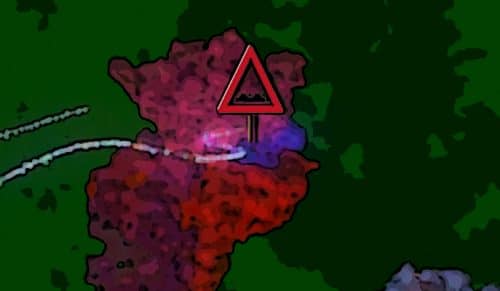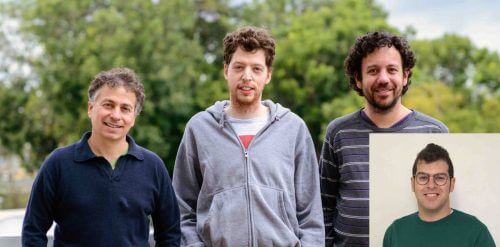How do living cells manage to "cut costs" - and produce proteins in the most economical way? Scientists from the Weizmann Institute have revealed several methods by which cells reduce the "cost" involved in the process of building proteins in the cell - including a "molecular traffic light" that regulates the work of ribosomes.

Who doesn't want to pay less and get more? It turns out that this rule is also true for living cells. The cells strive to utilize their resources in an optimal way, especially when it comes to the most "expensive" process in the cell in terms of energy investment - the expression of genes in the cell. This is, in fact, the process of producing proteins in the cell according to the genetic code. In a new study recently published in the scientific journal Molecular cells The scientists of the Weizmann Institute for Science revealed several methods by which the "cost" involved in the process is reduced. From this, as he explains Prof. Yitzhak Papel From the Department of Molecular Genetics, who is at the head of the research group, they gained considerable benefit: "Throughout evolution, the cells that knew how to produce proteins in the most 'cheap' way acquired a huge advantage over other cells. It can be said that the one who was the most economical - survived."
In the new study, the students Idan Frumkin, Dvir Shirman and Aviv Rothman, along with other members of Prof. Pepper's group, revealed a variety of methods by which the cells succeed in "reducing costs". One of them recalls the operation pattern of a traffic light placed at the entrance to a highway. This "molecular traffic light" regulates the work of the ribosomes - cellular machines for producing proteins, which move along molecules called messenger RNA (mRNA). These molecules contain the information about the protein composition. The function of the "traffic light" is to slow down the beginning of the movement of the ribosomes along the mRNA. "Similar to how the traffic light on the highway regulates the entry of vehicles into it, thus preventing traffic jams later on, this is also how the 'molecular traffic light' works," explains Prof. Pepper. "It prevents the ribosomes from creating 'traffic jams' on the mRNA, thus optimizing the process of building proteins in the cell."
A few years ago Prof. Pepper estimated that there are "molecular regulatory traffic lights" in the cell. However, only now did he have the opportunity to test this premise in laboratory experiments. "We received a unique 'gift'," says Prof. Pepper. "Scientists in the United States have designed 14,000 different versions of a gene that produces a certain protein called GFP. They produced these versions for their needs, but we used them to investigate how the design of the gene affects the 'price' of producing the protein." The members of Prof. Pepper's group injected each of the 14,000 variants into a variety of bacterial cells, and then compared the different amounts of GFP produced by the cells. "The bacteria that produced more GFP based on each molecule of mRNA, were the ones that used their resources in the most efficient way," explains Prof. Pepper.
"Similar to how the traffic light on the highway regulates the entry of vehicles into it and prevents traffic jams later on, so the 'molecular traffic light' prevents the ribosomes from creating 'traffic jams' on the mRNA - and optimizes the process of building proteins in the cell"

Later, the researchers deciphered the sequence of the genetic code segments in which the 14,000 genes differed from each other, and conducted a mathematical analysis of the segments using a bioinformatics model, built for the purpose of the experiment. They found that indeed, as they had estimated, the bacteria that produced the GFP most efficiently were those whose gene version included the "molecular traffic light". Furthermore, the scientists revealed three mechanisms by which the "traffic light" slows down the movement of the ribosomes when they start moving on top of the mRNA. First, similar to the traffic light that regulates traffic at the entrance to a highway, the "molecular traffic light" also stands at the entry point to the mRNA molecule. In other words, the "traffic light" appears at the beginning of the molecule. This segment of the molecule contains a genetic sequence that requires the assistance of rare molecules. This means that the ribosome is delayed until the arrival of a molecule that will give it a "green light" to continue on its way. In the other segments of the molecule, there are genetic sequences that require the assistance of relatively common molecules, which allows the ribosome to gain speed. Second, another mechanism that exists in the "traffic light" was created due to changes in the structure of the mRNA molecule. When the molecule is folded in its initial part, the folds make it difficult for the ribosome to move and slow it down. And thirdly, the strength of the interactions with the mRNA may also slow down the ribosome.
Apart from the "molecular traffic light", the scientists discovered additional methods by which the cell reduces the amount of energy spent in the protein production process. "Both these methods, as well as the 'traffic lights', are naturally found in bacteria," explains Prof. Pepper. In the future, it may be possible to install molecular regulatory traffic lights in bacteria in order to increase the production of insulin, antibodies, and other medical substances that are produced in the bacterial cells. "This increased production may benefit the biotechnology industries", Prof. Pepper concludes.
Also participating in the study were Liron Zahavi, Ernst Mordert and Omar Asraf, from the Department of Molecular Genetics of the Weizmann Institute of Science, and Dr. Fangfei Li, Dr. Song Wu and Dr. Sasha Levy, from Stony Brook University in the United States.
Watch the animation (from Prof. Ada Yonat's lab):

One response
According to the models that I remember, a film of RNA comes out of the nucleus of the cell and is led to one ribosome and the ribosome connects amino acids to a chain which is the primary structure of the protein according to the code in the RNA, but it was a long time ago when they just discovered that there is such a thing as a ribosome... I never thought about a film One of RNA dress up some ribosomes and create traffic and traffic jams...